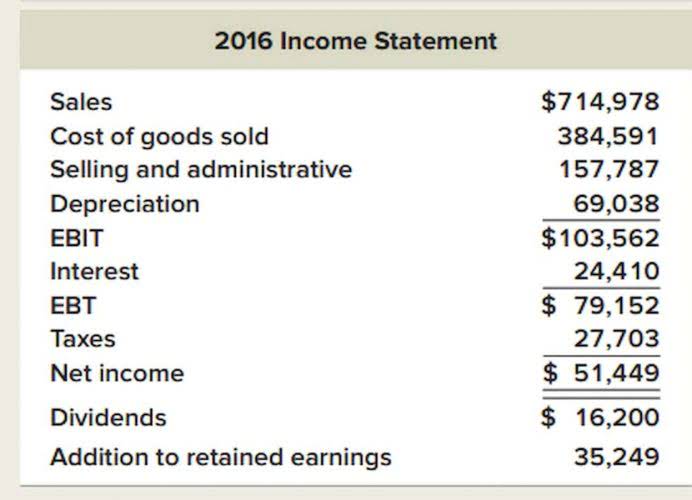
The discount rate – the minimum return for the corporation to accept the project (or “hurdle rate”) – is 5.0%, with the project expected to last five years in total. If the cumulative benefits of a potential project are anticipated to outweigh the incurred costs, a company is more likely to decide in favor of proceeding with undertaking the project. A school district is evaluating an upgrade of its computer systems to improve educational outcomes. With improved technology, they anticipate enhanced student performance, which could attract more students and increase funding by an estimated $100,000 over five years. recording transactions This analysis supports the investment by demonstrating significant long-term benefits relative to costs.

The Wharton Online & Wall Street Prep Applied Value Investing Certificate Program

Annika completed her Masters at the London School of Economics in an interdisciplinary program combining behavioral science, behavioral economics, social psychology, and sustainability. Professionally, she’s applied data-driven insights in project management, consulting, data analytics, and policy proposal. Passionate about the power of psychology to influence an array of social systems, her research has looked at reproductive health, animal welfare, and perfectionism in female distance runners. Making sure that each cost and benefit list is as comprehensive as possible is crucial to ensure the calculation is accurate. If just a few minor benefits are overlooked, the calculation could tip toward avoiding a potentially beneficial choice. The next step would be to compile an explicit list of all the expected costs and benefits.

Project Risk Register Template
- By designing a new process and getting buy-in from the C-Suite team, we helped one of the largest smartphone manufacturers in the world reduce software design time by 75%.
- Maintained and developed by the Department for Transport, it was a cornerstone of UK transport appraisal in 2011.
- However, the anticipated benefits—such as reduced landfill fees and environmental health improvements—are valued at $500,000 over a 10-year period.
- For the analysis to work, each type of benefit will need a monetary value assigned to it.
- If things change, and they will, the Gantt is easy to edit, so you can pivot quickly.
- Costs tend to be most thoroughly represented in cost–benefit analyses due to relatively-abundant market data.
- As a result, CBA can overlook concerns of equity and fairness, potentially favoring policies that disproportionately benefit certain groups while imposing burdens on others.
Regardless of the view, they all update live and they’re ready for you to utilize. Cost-Benefit Analysis (CBA) is a tool used to evaluate whether a project, policy, or decision delivers more advantages than cost benefit analysis simple definition disadvantages. At the heart of this process are costs and benefits, which need to be clearly defined to ensure a thorough and accurate analysis. These elements represent the potential sacrifices and gains of the proposed action, guiding decision-makers toward informed choices.
How Does Cost-Benefit Analysis Differ from Other Financial Evaluation Methods?
- Include additional insights, like the long-term sustainability or potential challenges, to guide decision-makers.
- In those cases, calculating the net present value, time value of money, discount rates and other metrics can be complicated for most project managers.
- A cost-benefit analysis also requires quantifying non-financial metrics, such as the financial benefit of increased employee satisfaction.
- No, all of our programs are 100 percent online, and available to participants regardless of their location.
- The initial cost to set up the program, including bins and educational campaigns, is estimated at $200,000.
- By thoroughly identifying and categorizing these costs and benefits, you can ensure a comprehensive analysis that aids in making informed decisions.
A cost-benefit analysis (CBA) is a method used to evaluate the pros and cons of a project or decision by comparing its total expected costs and benefits, often expressed in monetary terms. This approach helps decision-makers determine whether the benefits outweigh the costs, ensuring that resources are allocated efficiently. Widely used in business and public policy, CBAs are a useful tool for balancing financial, social, and environmental factors in decision-making. In conclusion, a cost-benefit analysis is a valuable tool for making informed decisions. By clearly defining project scopes, identifying costs and benefits, assigning monetary values, comparing these figures, and making recommendations, you can evaluate the feasibility and potential success of a project. This structured approach not only aids in understanding the financial implications but also helps ensure that resources are used effectively.

What Are Some Tools or Methods Used in Cost-Benefit Analysis?
- If total costs outnumber total benefits, then you may want to reconsider the proposal.
- Incorrect estimates of future costs or benefits can result in faulty conclusions.
- Suppose we’re tasked with calculating the cost-benefit analysis ratio of a project on behalf of a corporation.
- The first step in a cost-benefit analysis is to clearly define what you are evaluating.
Please review the Program Policies page for more details on refunds and deferrals. You may split your payment across two credit card transactions or send a payment link to another individual to complete payment on your behalf. Updates to your application and enrollment status will be shown on your account page.
![]()
The ultimate goal is to deliver a straightforward report that simplifies decision-making. A Travel Agency Accounting cost-benefit analysis requires substantial research across all costs, including unpredictable ones, and a thorough understanding of expense types and characteristics. This extensive research strengthens the findings and supports strategic planning efforts. Uncertainty in CBA parameters can be evaluated with a sensitivity analysis, which indicates how results respond to parameter changes.
